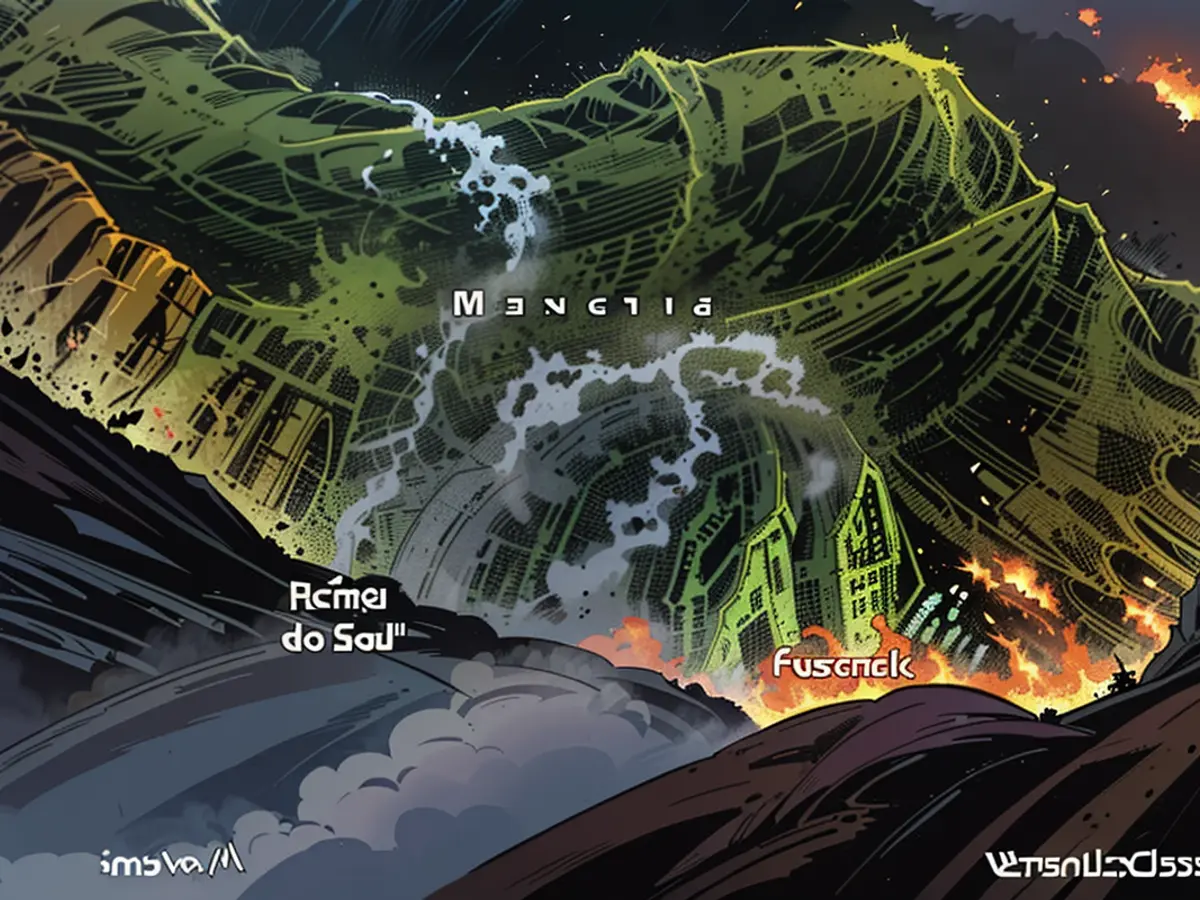Upon making contact with Michelangelo's David's locks of hair
"It's taboo to touch the exhibits" - a phrase we're all familiar with from childhood visits to museums. But in Ancona, Italy, they actively encourage visitors to touch famous sculptures with their hands. Aldo Grassini recounts the story of how he and his wife started the Touch Museum.
The reverence for Michelangelo's David is so great that one barely dares to even brush against his locks, nose, or lips. But in the Museo Omero in Ancona, not only is touching allowed, but it's even encouraged. The primary goal is to allow blind people to explore and feel the textures of the artwork, but sighted visitors are also welcome to partake in this unique experience.
"We usually rely on the descriptions provided by our guides," Aldo Grassini shares with ntv.de. Along with his wife, the 84-year-old founded the museum. Both are blind, yet their passion for art has never wavered. "We've traveled all over Europe", Grassini says, "and now we're exploring other continents."
Grassini's office is located within the Mole Vanvitelliana, an impressive building right by the harbor. The impressive pentagonal layout of the building gives it a fortress-like appearance, but it originally served as a lazaret.
"Taboo Touch" and Human Rights
Grassini discusses the frustration of constantly encountering the phrase "Touching is forbidden." While he understands there are artworks where this makes sense, "what harm can I do to an Egyptian sculpture, carved from a single block of granite, if I touch it?" he asks.
Inspired by this question, the couple decided to turn this frustration into a lifelong mission in 1985. While in Augsburg, they experienced yet another instance of museum rules limiting their experience. Over dinner, Daniela Grassini had the idea of establishing a museum for the blind.
Grassini refers to the Universal Declaration of Human Rights, which states that "Everyone has the right to participate freely in the cultural life of the community, to enjoy the arts, and to share in scientific advancement and its benefits."
Backed by this belief, the Grassinis approached the local administration, regional institutions, officials, schools, and anyone who could help make their dream a reality. They also sought expert advice to recommend which works a sculpture museum, aiming to represent art history from ancient Greeks to modern times, should display.
Homer the Blind Poet as a Guide
Eight years later, their dream became a reality. A school provided some empty classrooms where the initial 19 sculptures could be displayed - all made from original molds. Since then, they've secured a permanent location at the Mole Vanvitelliana.
The choice of the museum's name, Museo Omero, was inspired by the blind poet Homer, who wrote the Iliad and Odyssey through his imagination. "A skill that is also awakened and nurtured through touch. Curves, bulges, flat spots, edges are like puzzle pieces that result in a complete image in our heads," says Grassini.

Today, the museum features over 200 artworks on display on the 2nd and 3rd floors of the Mole. "The first sculpture I wanted to touch was the Venus de Milo," recalls Grassini during a tour of the halls. And of course, there's an example on display.
The sight of the paintings, although they are copies, is moving. But visitors can't help but wonder if they're really allowed to touch the bronze Poseidon? "Yes, you are," corrects Alessia Varricchio, a close colleague of Grassini, "but it's not bronze, but resin, just like the Capitoline Wolf, the symbol of Rome." The shape and size of these copies may be identical to the originals, but the materials often differ. For example, instead of marble, it is made of plaster. "But that doesn't matter," explains Varricchio further, "because for a blind person, the shape is the most important thing."
And so, visitors explore the Nike of Samothrace, Roman versions of the Diskobolos, and other masterpieces by feeling their way through the halls. There's even the Pantheon in Rome and the Duomo of Florence to touch.
Touching the Forbidden in East Berlin, 1983
And the Grassinis continue to share amusing anecdotes. "It was in 1983 that we first visited East Berlin with two blind friends," shares Aldo Grassini, "Our destination was the Pergamon Museum. As always, a museum guard pointed out not to touch anything. The man was on duty with a colleague who disagreed with him. The ensuing disagreement allowed us to touch the artifacts in peace."
Over the years, the Omero Museum has gained popularity not just domestically, but internationally as well. Despite Madrid having a museum for the blind with a focus on archaeology, it's privately operated and mostly focused on archaeology. Standing out as a public institution, the Omero Museum has garnered attention from notable museums, including the Louvre in Paris and the National Archaeological Museum in Cairo, who have offered collaborative opportunities. In Cairo's case, the Omero was sought out for advice on setting up three wings filled with tactile exhibits.
Plato and his thoughts on thoughts
Besides showcasing art history masterpieces, there's a section dedicated to contemporary art. A majority of the pieces are original works generously donated by the artists themselves.
One such work is the eight-meter-long wooden sculpture "Italy Recycled," depicting the boot shape, created by Michelangelo Pistoletto for the 2012 Venice Biennale. Sadly, we missed it at the time, but managed to encounter it on the ground. A journalist photographed us, and then Pistoletto himself came over to chat. A year later, he graciously gifted the work to the Museo Omero.
A Picasso's Guernica section is also present. This was hand-carved by students at the Senior University, guided by their art professors, before being donated to the museum.
The museum is open to all, accommodating over 27,000 visitors last year. Surprisingly, only 10% of those visitors had visual impairments. For those interested, a 'closer-than-ever' experience of the exhibits can be had by exploring the museum with one's eyes closed. Grassini acknowledges, "It's an option, but not mandatory. A sighted person can still gain fresh perspectives through touch." A notion that mirrors Plato's ancient Greek belief that the tangible world is merely a manifestation of abstract ideas.

In contrast to the reverence shown towards Michelangelo's David, the Museo Omero in Ancona, part of the European Union, allows and encourages visitors to touch renowned sculptures. Adhering to the Universal Declaration of Human Rights, the Grassinis, founders of the museum, aim to give everyone the right to participate in cultural life and enjoy art.
The success of the Museo Omero has led to international recognition, with notable museums like the Louvre in Paris and the National Archaeological Museum in Cairo seeking collaborative opportunities due to its unique and inclusive approach.








